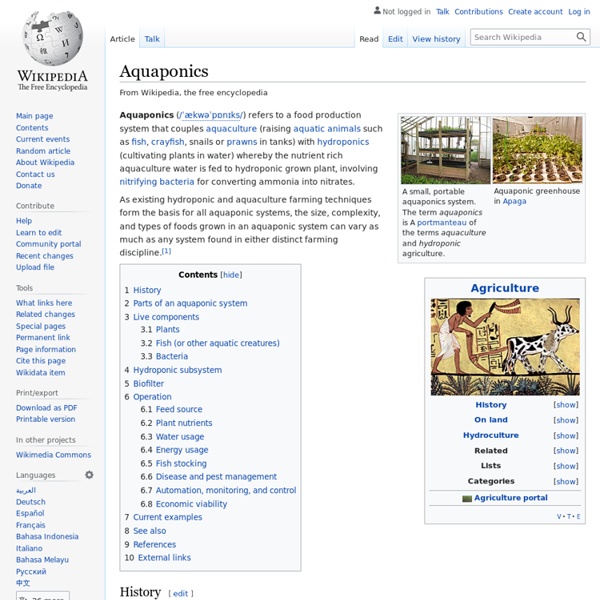Aquaponics

Raising tilapia at home
Raising Tilapia at home Trying to be self sufficient in these troubled times is not easy, though it probably never has been easy. One has to be very thrifty and capable of doing most thing themselves. I bought my first 60 3/4" tilapia fingerlings through the mail from a place in Iowa, called TilapiaHybridPair.com. them since the foam filter can be used over and over, saving a lot on filters. drilled every 10" or so. as well. been able to eat any of the fish yet though I've eaten a lot of lettuce, but that's okay. February 15th update: Winter has been a cold one with much snow and ice along with single digit temps. from Hong Kong through EBay, using Pay pal for $15.00 plus $10 air mail! I have yet to have any new fry born, though there has been several of the females which appeared to be carrying the eggs, but for some reason, after several days swallowed them. April 1, 2011 Spring has sprung here in the Nor-east RI. May 23, 2011 July 13, 2011 will be able to count them accurately soon.
Stadiongarten | Lokaler Treffpunkt und Umweltbildung
A Millionaire on One Acre with Aquaponics
Become a Millionaire on One Acre with Aquaponics - by Colle Davis, Phil Estes and Phyllis Davis The most common request we receive from those would like to become a commercial aquaponics farmer is from people who already have the land and want to cover it in aquaponics installations, BUT they do not have the money to make the initial investment. The majority of the extremely valuable information that we had previously provided in this article for free of charge is now included in our Portable Farms® Aquaponics System Course: CLICK HERE for more information. The numbers are impressive. However, this investment is NOT for the faint of heart or for the passive investor looking for a super safe investment. This project requires hard work, focus and dedication on the part of everyone involved.
Schweizer Stadtbauern sind schneller als Star-Architekt Callebaut | bauwelt.ch
Wenn Star-Architekt Vincent Callebaut über den globalen Städtebau bestimmen könnte, wären unsere Metropolen bald nachhaltige, grüne Oasen. Seine visionären Hochhaus-Modelle vereinen auf engstem Raum modernes, luxuriöses Wohnen mit ökologischer Landwirtschaft («urban farming»), dem Einsatz von Biomasse-, (organische Abfälle), Solar- und Windenergie, Kompostierung und einem Recycling der übrigen - auch industriellen - Abfälle. Mit seinen energieautarken, ökologisch verträglichen Projekten findet Callebaut in Zeiten des Klimawandels und einer zunehmend nachhaltigen Energiepolitik weltweit grosse Beachtung. Leider existieren die meisten Projekte bisher nur auf dem Reissbrett. Schweizer realisieren weltweit einzigartiges Projekt Vielleicht sollten sich Callebaut und seine Architekten Mal mit den Schweizer «Urban Farmers» rund um Roman Gaus auseinandersetzen. Imagefilm der Urban Farmers Callebaut will 2016 folgen (Bildquelle: Vincent Callebaut, Architectures) Weitere Informationen:
Related:
Related:



